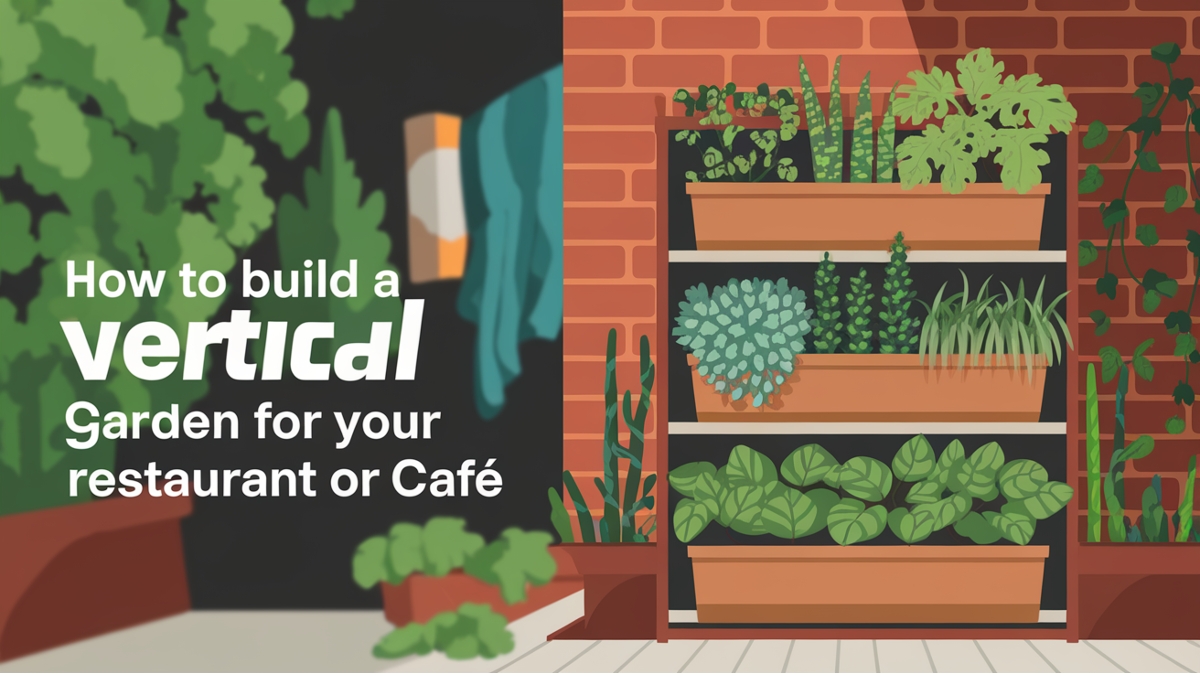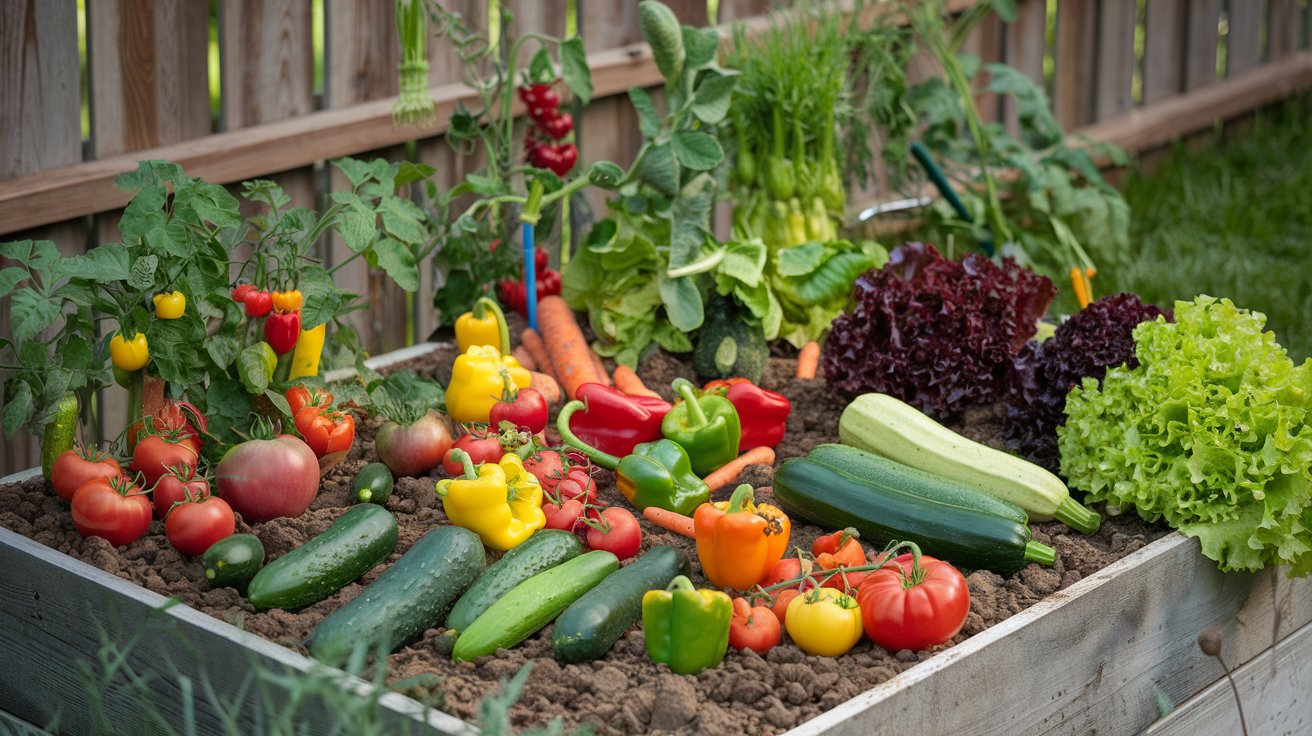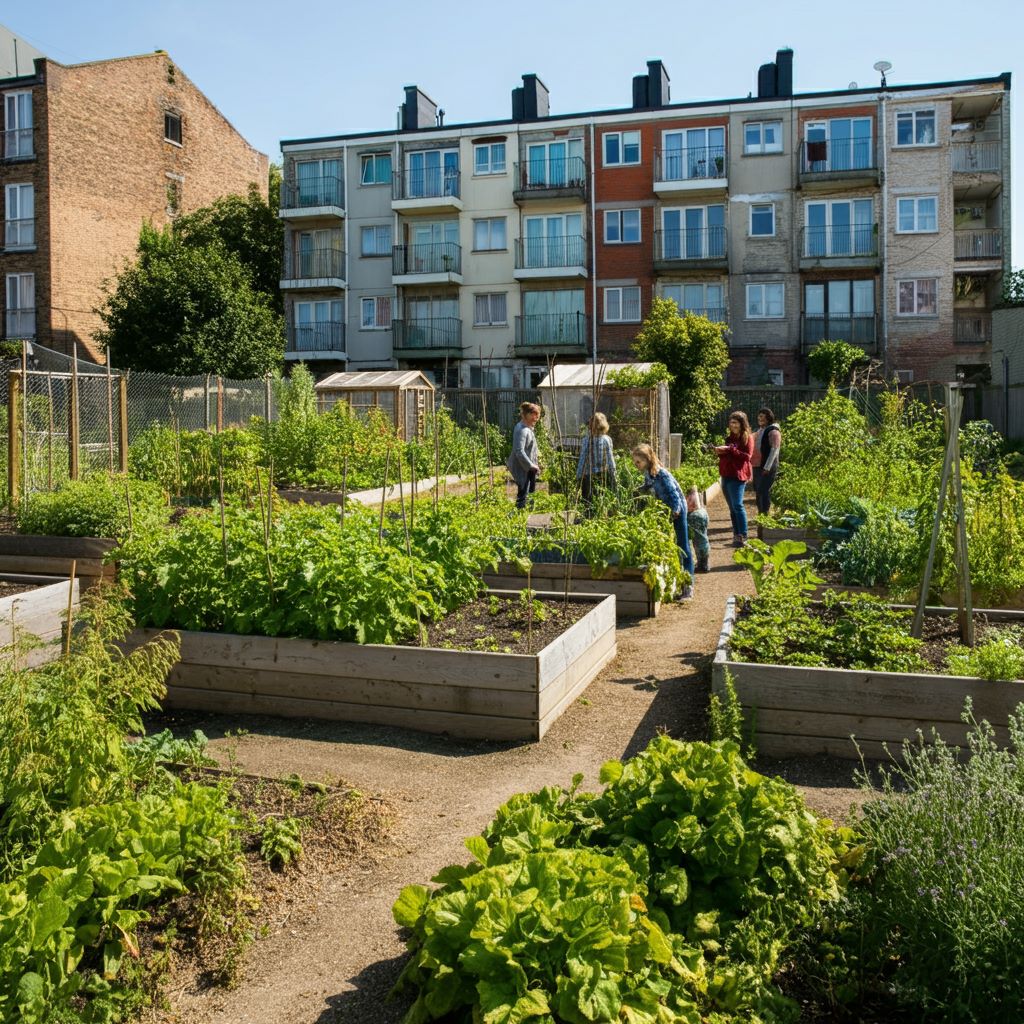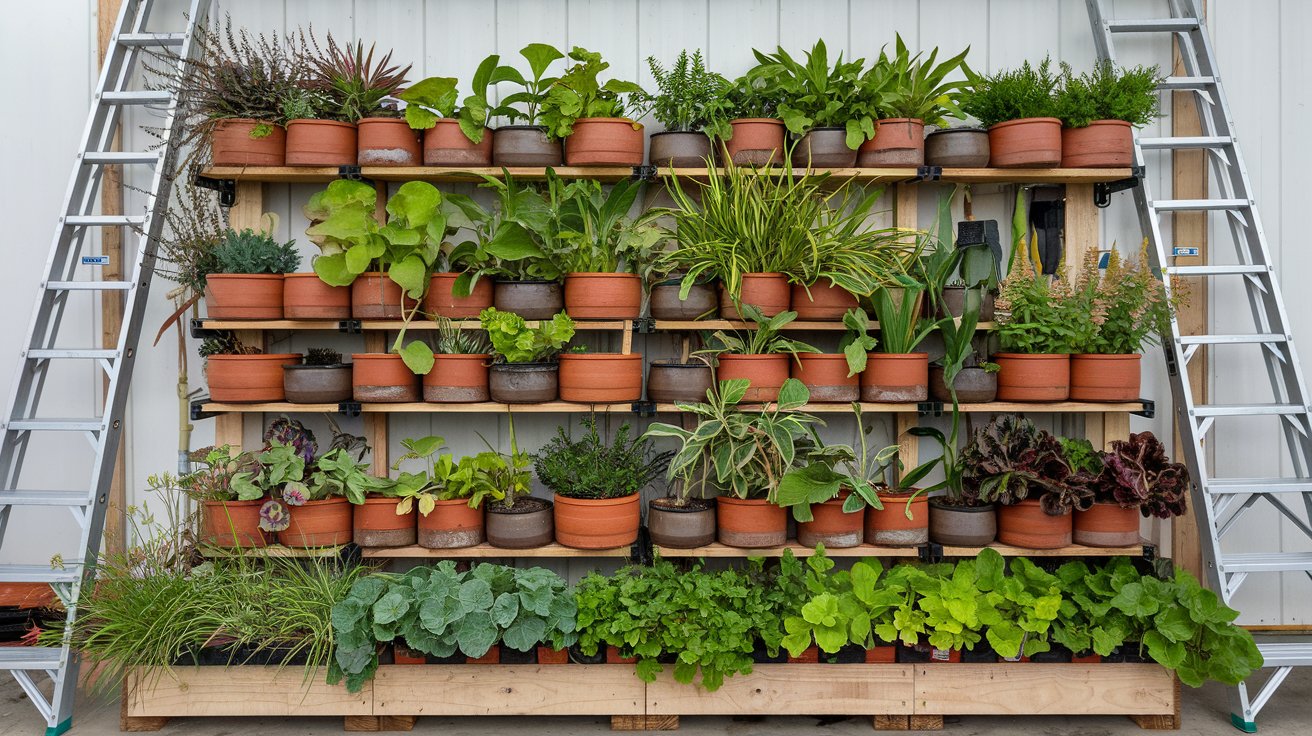Incorporating a vertical garden into your restaurant or café is one of the most innovative and eco-friendly ways to transform your space. A vertical garden allows you to bring nature into your business without sacrificing precious floor space. In cities where both commercial and residential properties often have limited outdoor space, the vertical garden is an ideal solution. Not only can it enhance the aesthetic appeal of your dining areas, but it also offers various environmental and customer experience benefits.
As a business owner or designer, building a vertical garden presents a unique opportunity to showcase your commitment to sustainability while creating an inviting atmosphere. This guide will explore how to build vertical gardens in a restaurant or café setting, providing detailed tips on design, plant selection, maintenance, and budgeting. Whether you’re looking to revamp your restaurant’s décor or add a fresh touch to your café’s ambiance, a vertical garden could be just the thing.
Key Takeaways
- Space Optimization: Vertical gardens make efficient use of available wall space, especially in small commercial environments.
- Eco-Conscious Appeal: Green walls help to promote sustainability and environmental responsibility.
- Aesthetic Benefits: Vertical gardens add a visually striking, calming element to your restaurant or café.
- Low Maintenance: With proper plant selection and design, maintaining a vertical garden can be simple and time-efficient.
- Customer Experience: A vertical garden can enhance the dining experience by adding a natural, relaxed ambiance to your establishment.
Table of Contents
Understanding Vertical Gardens for Restaurants and Cafés
Vertical gardens, also known as green walls, are not just decorative but functional garden installations. They consist of plants growing vertically on structures such as walls or frames, often mounted indoors or outdoors. These gardens can be tailored to various spaces, whether they are large commercial settings or intimate cafés.
What Makes Vertical Gardens Ideal for Commercial Spaces?
One of the primary reasons vertical gardens are well-suited for commercial spaces, particularly restaurants and cafés, is their ability to maximize space. In busy urban environments where floor space is often limited, vertical gardens utilize vertical surfaces, allowing businesses to grow lush greenery without occupying valuable square footage.
For restaurants with narrow hallways or tight corners, green walls can create visual appeal without overcrowding the space. Outdoor vertical gardens also provide a great way to cover otherwise unused areas such as fencing or blank walls, making the outdoor space more inviting and attractive.
Moreover, vertical gardens help enhance air quality, provide insulation, and create a more comfortable dining experience, which can have a positive impact on customers. Many diners today value sustainability, and incorporating vertical gardens reflects the business’s commitment to eco-friendly practices.
Types of Vertical Gardens for Restaurants and Cafés
There are two main types of vertical gardens: indoor and outdoor. The choice between the two largely depends on the available space and how you envision using the garden. Indoor gardens can be mounted on walls or incorporated into living room-like settings to add a natural touch to the décor. On the other hand, outdoor vertical gardens are more prominent and can be used to cover fences, provide privacy, or even act as a centerpiece for an outdoor patio or courtyard.
Benefits of Building a Vertical Garden in Your Restaurant or Café
Vertical gardens offer a myriad of benefits to restaurants and cafés, both in terms of aesthetics and functionality. The key benefits include:
Space Efficiency and Maximization
In any restaurant or café, space is at a premium, especially in densely populated urban areas. Vertical gardens use minimal horizontal space by leveraging vertical surfaces such as walls or fences. By utilizing this vertical space for greenery, you can free up precious floor area for seating or other customer amenities. This makes vertical gardens an ideal solution for small or narrow spaces where floor space is limited.
Eco-Friendly and Sustainable Design
A vertical garden in your restaurant or café can significantly contribute to environmental sustainability. Plants naturally absorb carbon dioxide, helping to improve air quality by converting it into oxygen. In addition, green walls can help reduce noise pollution by acting as a natural sound barrier, which is particularly useful in busy or noisy urban environments.
Many restaurants are also turning to vertical gardens to improve energy efficiency. Green walls can help regulate the temperature by acting as a natural insulator, keeping your establishment cooler in the summer and warmer in the winter. This can potentially reduce heating and cooling costs, making your business more energy-efficient and sustainable.
Aesthetic Appeal and Customer Engagement
A green wall serves as an eye-catching focal point, making the dining experience more immersive for customers. Whether it’s an indoor garden mounted on a wall or a large outdoor vertical garden, the greenery adds texture, depth, and visual interest. Customers are naturally drawn to beautiful, natural spaces, and this can create a more inviting atmosphere.
Having a vertical garden also fosters a connection to nature, which can provide a calming and relaxing environment for diners. It can make your restaurant or café stand out from the competition, offering a unique and engaging experience.
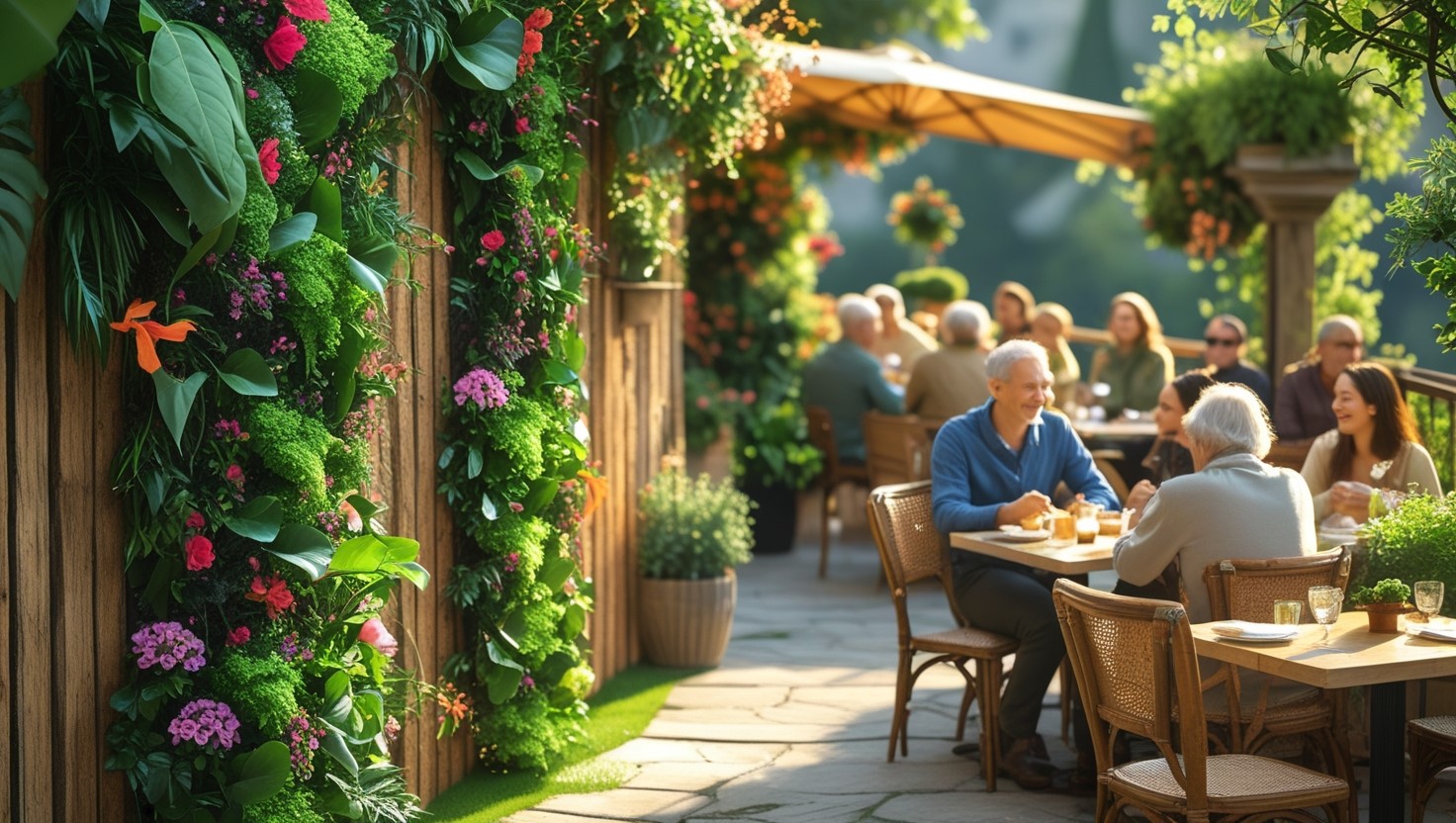
A vertical garden integrated into an outdoor restaurant patio
Planning and Preparing to Build Your Vertical Garden
Before diving into building your vertical garden, there are several essential planning steps to ensure its success.
Assessing Available Space
Careful planning begins with evaluating the available space for the vertical garden. Measure the wall area to determine how much space you have to work with. It’s also important to check the weight-bearing capacity of the wall or structure, as a vertical garden can be quite heavy once fully planted. Walls that are not strong enough might need reinforcement before installing the green wall system.
Choosing the Right Location for the Vertical Garden
The next consideration is the garden’s location. If you are creating an indoor vertical garden, make sure it’s near a light source, whether natural or artificial. Most plants need adequate sunlight to thrive, but there are some species that tolerate low-light conditions, so choose wisely. If the garden is for outdoor use, find a location that has access to sufficient sunlight and is visible to customers. Outdoor gardens are best placed along patios, fences, or walls facing customer seating areas for maximum impact.
Selecting the Right Plants for Your Vertical Garden
The success of your vertical garden depends largely on choosing the right plants. Plants must be suitable for the environment, and they must complement the overall design of your restaurant or café.
Best Plants for Low-Light Conditions
If your restaurant or café lacks natural light or has limited sunlight in certain areas, choosing low-light plants is key. Some excellent options include ferns, ivy, snake plants, and peace lilies. These plants thrive in shaded areas and can handle the lower light levels often found indoors.
Edible Plants for Culinary Use
If you’re looking to incorporate fresh herbs into your restaurant’s dishes, consider plants like basil, rosemary, thyme, and mint. Not only will these plants provide fresh ingredients for your kitchen, but they’ll also add an aromatic element to the dining space. Edible plants are a great way to bring sustainability into your business, allowing customers to see where their food comes from.
Low-Maintenance Plants
To ensure that your vertical garden remains hassle-free, select low-maintenance plants that require minimal care. Succulents like aloe vera, jade plants, and echeveria are perfect for busy restaurants where time for plant care might be limited. These hardy plants are drought-resistant and require little attention to thrive in vertical garden systems.
Plant Selection Table for Vertical Gardens in Restaurants
| Plant Type | Light Requirement | Maintenance Level | Ideal for Culinary Use? |
| Snake Plant | Low to medium | Low | No |
| Mint | High (Direct Sun) | Medium | Yes |
| Aloe Vera | High (Direct Sun) | Low | No |
| Pothos | Low to medium | Low | No |
| Rosemary | High (Direct Sun) | Medium | Yes |
Vertical Garden Design Ideas for Restaurants and Cafés
Designing your vertical garden to complement your restaurant’s theme and space is critical. Here are a few ideas to consider when planning your vertical garden installation.
Wall-Mounted Systems
One of the simplest and most popular ways to incorporate a vertical garden into your café or restaurant is by mounting plant containers or frames directly onto the walls. This is especially useful in indoor environments where space is tight. Wall-mounted systems can be customized to fit the aesthetic of your restaurant, from sleek metal frames to rustic wooden shelves. The plants can be arranged in tiered formations to create an organized and balanced visual display.
Freestanding Structures
If you have more space to work with, freestanding vertical garden systems can be a great option. These structures are mobile, allowing you to adjust the layout as needed. Freestanding towers or garden racks offer flexibility and can be used both indoors and outdoors.
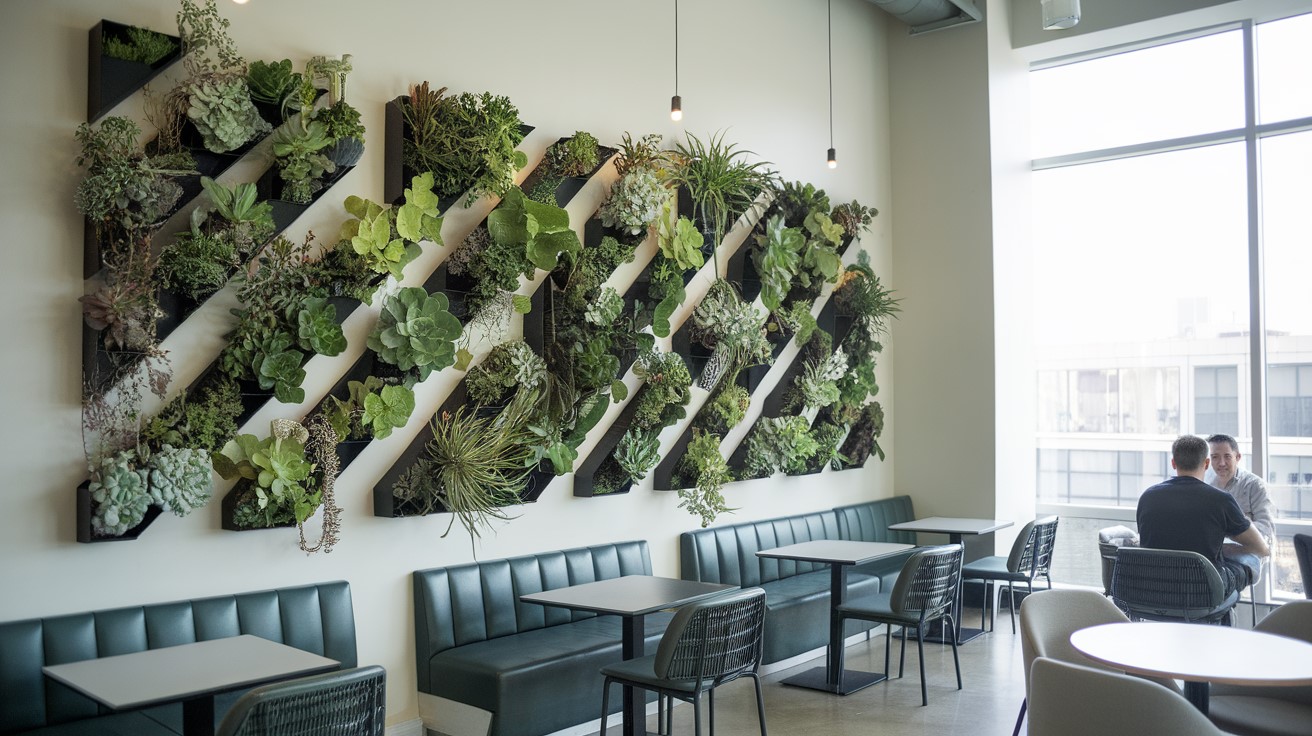
A tiered, wall-mounted vertical garden system in a modern restaurant
How to Build a Wall-Mounted Vertical Garden
Building a wall-mounted vertical garden involves several steps, but with the right materials, it can be a straightforward DIY project.
Gather Materials
You’ll need planters or containers (metal, wood, or plastic), a sturdy framework (such as a wooden or metal rack), screws and anchors, and an irrigation system (optional but highly recommended for ease of maintenance). Additionally, ensure you have the right tools like drills, screwdrivers, and a measuring tape.
Installation Process
Start by measuring the available wall space and deciding how much of the wall you want to cover. Install the frame or shelving system using screws or wall anchors to ensure it’s securely attached to the wall. Once your frame is in place, arrange the planters and secure them to the frame. You can use a mix of larger and smaller planters to create layers and add depth to the design.
Planting and Irrigation
Once the structure is in place, you can begin adding your plants. Arrange them based on their sunlight needs and size. For watering, consider installing a drip irrigation system to ensure that the plants get consistent hydration without requiring daily attention.
Conclusion
Building a vertical garden for your restaurant or café is a creative, eco-friendly way to maximize space and elevate your dining environment. Whether you opt for an indoor green wall or an outdoor garden, the benefits are clear: a more inviting ambiance, improved air quality, and a commitment to sustainability that resonates with customers. With the right planning, materials, and plant selection, a vertical garden can become a stunning focal point of your restaurant or café.
Frequently Asked Questions
How much does it cost to build a vertical garden for a café or restaurant?
The cost varies based on the size of the vertical garden, plant selection, and materials used. On average, a small indoor garden can cost between $500 to $1,500, while larger systems may exceed $2,000.
What are the best plants to use for a vertical garden in a restaurant?
For low-light environments, plants like snake plants and pothos work well. For culinary use, herbs such as basil and mint are popular choices. Consider the maintenance level and light conditions of the space when selecting plants.
Can vertical gardens work in spaces with low light?
Yes, many plants thrive in low-light conditions. Ferns, ivy, and snake plants are excellent options for areas that don’t get direct sunlight.
How often do I need to water a vertical garden in a commercial space?
Vertical gardens typically need to be watered 2-3 times a week, depending on the type of plants. A drip irrigation system can help automate this process.
What are the maintenance requirements for vertical gardens in restaurants?
Vertical gardens require regular watering, pruning, and pest control. Ensure your irrigation system is functioning properly and that plants are getting the right amount of light.
Can vertical gardens help with energy efficiency in restaurants and cafés?
Yes, vertical gardens act as natural insulators, helping regulate temperature and reduce the need for air conditioning or heating. This can lead to energy savings over time.

Robert Martin is a passionate blogger and versatile content creator exploring the intersections of personal finance, technology, lifestyle, and culture. With a strong background in financial literacy and entrepreneurship, he helps readers make smarter money moves, build sustainable side hustles, and achieve financial independence.
Beyond finance, Robert shares his insights on home decor and gardening—offering practical ideas for creating beautiful, functional living spaces that inspire comfort and creativity. He also dives into the dynamic worlds of sports and celebrity news, blending entertainment with thoughtful commentary on trends that shape today’s pop culture.
From decoding the latest fintech innovations to spotlighting everyday success stories, Robert delivers content that’s informative, relatable, and actionable. His mission is to empower readers to live well-rounded, financially confident lives while staying inspired, informed, and ahead of the curve.

